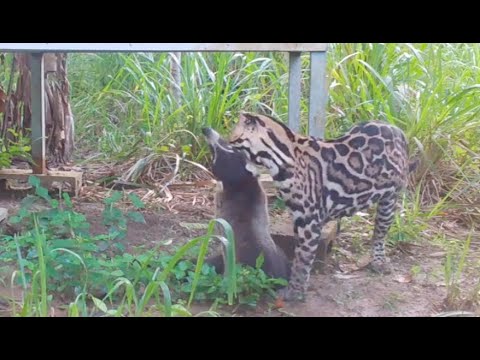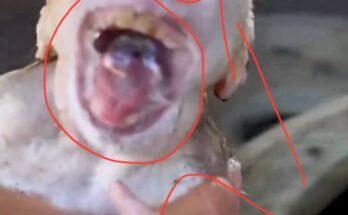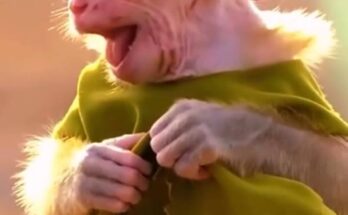
In the heart of Costa Rica’s Osa Peninsula, where the rainforest pulses with biodiversity and the trees whisper age-old stories, an intense and silent drama was unfolding. It was early morning—mist still clung to the canopy, and golden light filtered through the dense foliage. This part of the forest was monitored by Osa Conservation, a research group working to protect the region’s incredible wildlife.
Hidden deep in the undergrowth, a motion-sensitive camera trap captured what few humans ever see—a rare confrontation between two of the rainforest’s most iconic mammals: an ocelot and a white-nosed coati.
The coati, a raccoon relative with a long snout and striped tail, had been foraging alone. While usually found in groups, some coatis wander independently, especially young males. This one had been sniffing through the leaf litter, overturning fallen branches in search of insects and fruit. Oblivious to danger, it padded along a forest trail that many animals use—without realizing it was being watched.
From the shadows, the ocelot observed. With its sleek spotted coat and muscular build, the ocelot is a master of stealth. It had been trailing the coati for several minutes, silent and focused. Ocelots are ambush predators, relying on surprise and speed rather than endurance. The moment the coati slowed to investigate a hollow log, the ocelot made its move.
A rustle of leaves. A blur of movement. The coati spun around just in time.
The camera trap caught the moment—eyes wide, fur bristling, the coati let out a sharp bark and leaped to the side. The ocelot pounced but narrowly missed. In a flurry of dust and leaves, the coati dashed up a nearby tree. Though not as agile in trees as monkeys, coatis can climb quickly when threatened.
The ocelot paused beneath the trunk, tail flicking. It hissed softly, frustrated by its failed hunt. After several minutes of circling the tree and testing the base with its claws, it gave up and slinked back into the forest shadows.
The coati remained high in the branches, chest heaving, eyes scanning the forest floor. It had survived this time.
This remarkable interaction, preserved by Osa Conservation’s camera trap, was more than just a predator-prey encounter. It was a vivid reminder of the delicate balance within tropical ecosystems—where each moment can mean life or death. These glimpses into the secret lives of rainforest animals help researchers understand behavior, habitat use, and the ongoing challenges of survival in a rapidly changing world.


